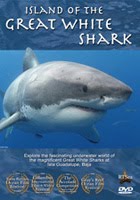 One of the great learning tools is engagement and, unfortunately, conservation issues are sometimes hampered by the inability of people to truly feel engaged or appreciate what may be happening in a distant part of the world, say the Arctic for instance.
One of the great learning tools is engagement and, unfortunately, conservation issues are sometimes hampered by the inability of people to truly feel engaged or appreciate what may be happening in a distant part of the world, say the Arctic for instance.The issue of polar bears and what is threatening their existence due to warming Arctic temperatures, will be brought to light in a series of live webcasts being staged by Polar Bears
 International. Called Tundra Connections, the 30 scheduled webcasts started on October 28th and will run to the end of November. Viewers will be able to log on and ask, in real time, questions of the research scientists and conservationists that are monitoring the polar bear migration in Churchill, Manitoba, Canada.
International. Called Tundra Connections, the 30 scheduled webcasts started on October 28th and will run to the end of November. Viewers will be able to log on and ask, in real time, questions of the research scientists and conservationists that are monitoring the polar bear migration in Churchill, Manitoba, Canada.There will be a wide range of people involved: zoologists and other experts on polar bears, climatologists to discuss the impact of climate change on the Arctic, even legal advisers from the Center of Biological Diversity. Check out the Tundra Connections website for broadcast dates.
Speaking of the Arctic, NOAA has released its Arctic Report Card 2010 and it still shows that grades are slipping in the areas of sea ice, long-term climate change, and weather pattern disruption. While the Arctic still experiences warm/cold cyclical temperature patterns that can temporarily alter ecosystem patterns, the overall trend is still towards warmer temperatures.
NOAA reported that this year was the shortest duration of Arctic snow cover since record-keeping first began in 1966. And areas like Greenland continue to experience significant ice and glacier loss. With more fresh water mixing into the Arctic's oceans, everything from algae growth to fish populations to currents gets disrupted.
The Arctic regions are experiencing polar amplification whereby, with more sea ice melting (sea ice that would normally reflect sunlight), more dark exposed ocean now absorbs sunlight which accelerates the warming process. A by-product of this effect is changes in polar winds. Pushed southward, these cold winds can produce colder winters in mid-latitudes - making some people wonder how can there be global warming when I'm freezing? Just ask a polar bear.
Check out the Tundra Connections webcasts.
Read the NOAA Arctic Report Card 2010.







No comments:
Post a Comment